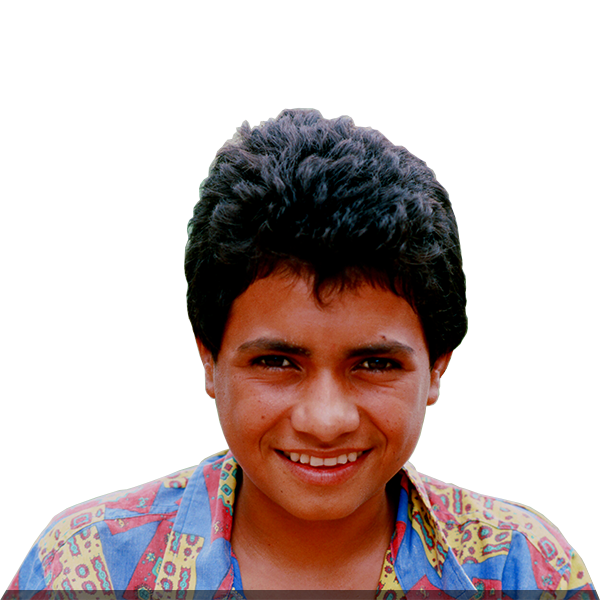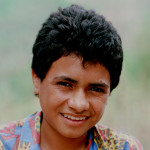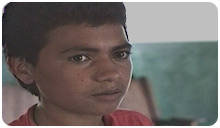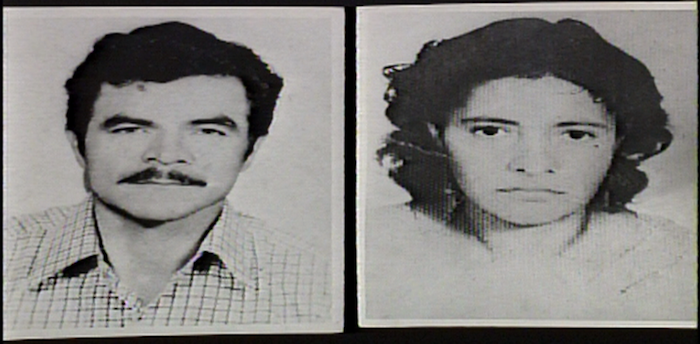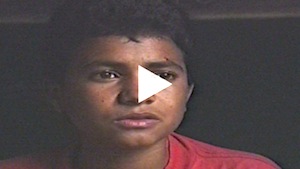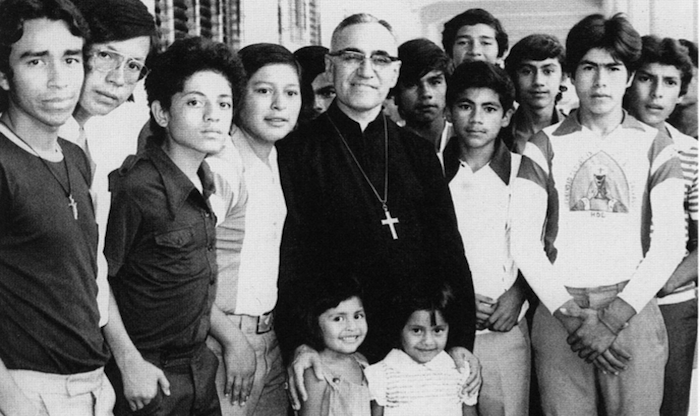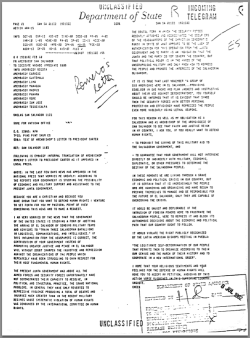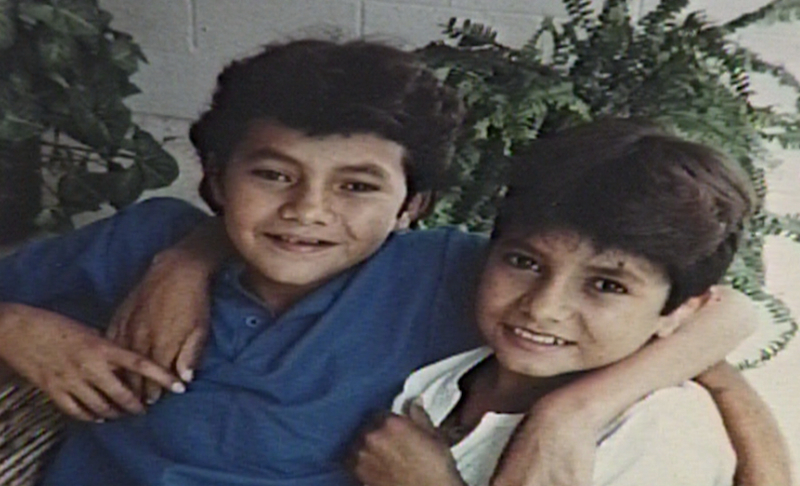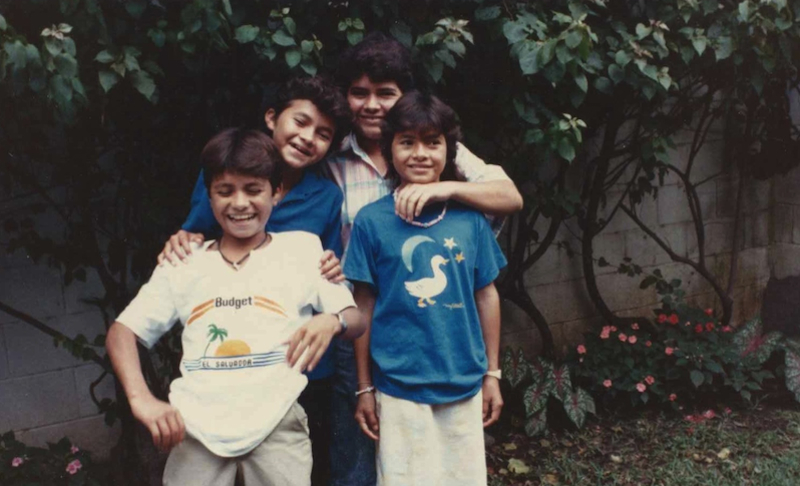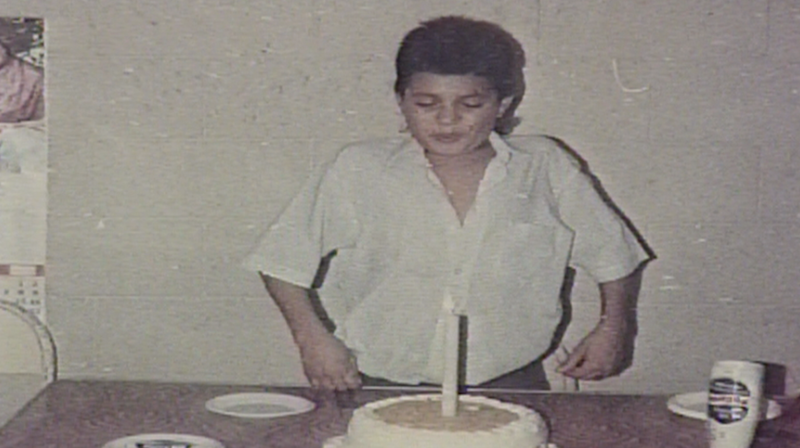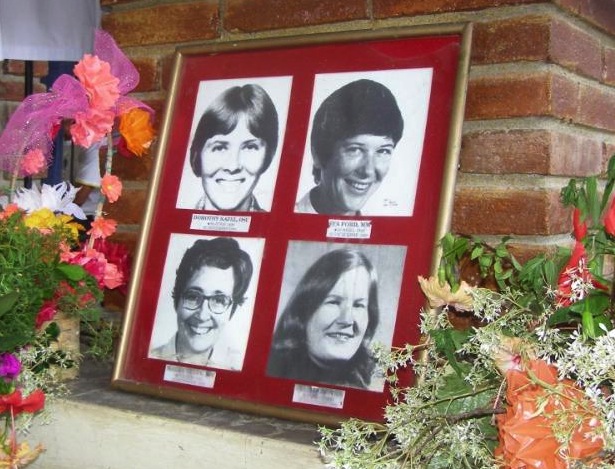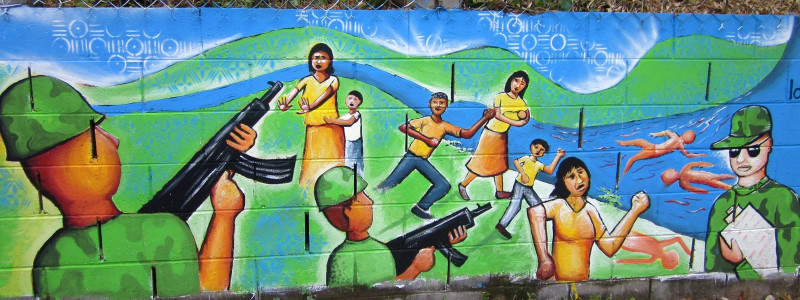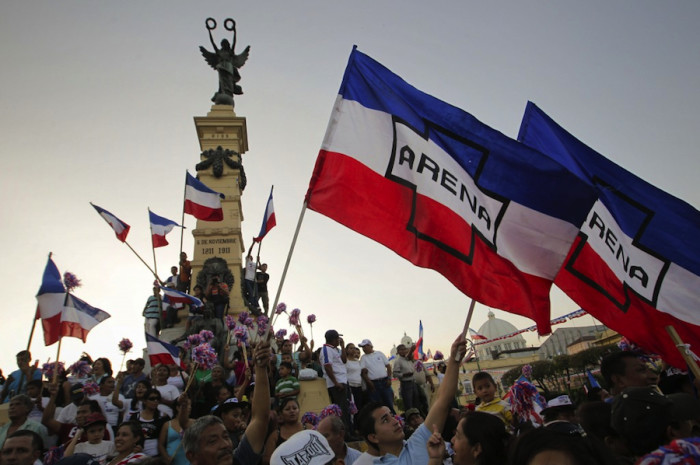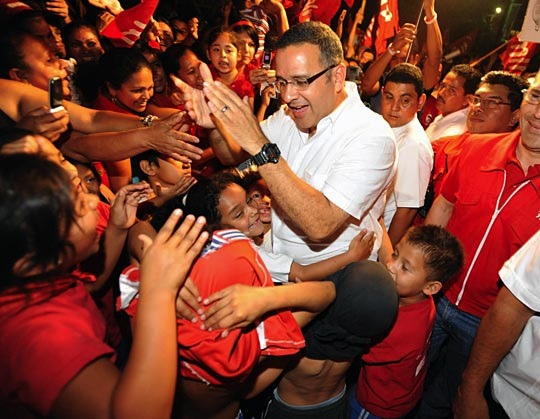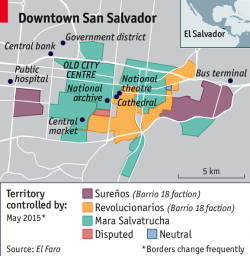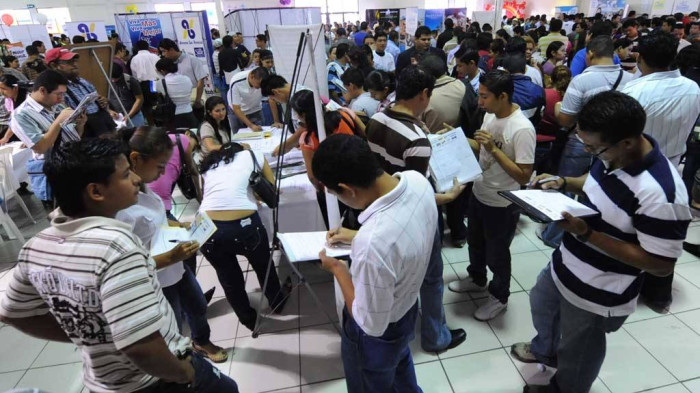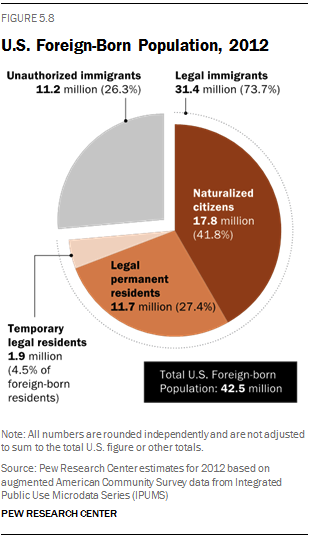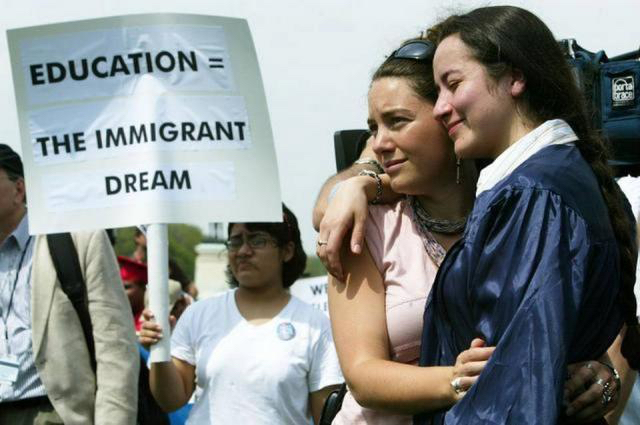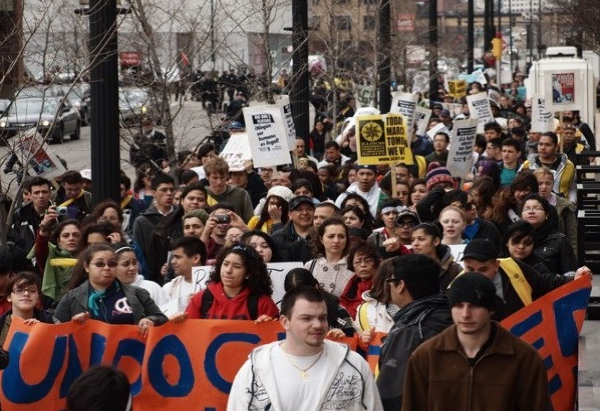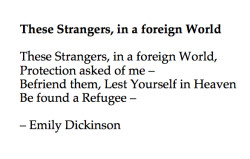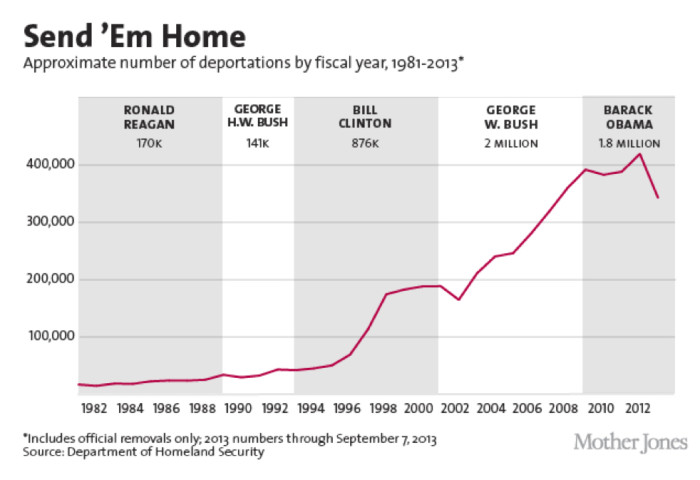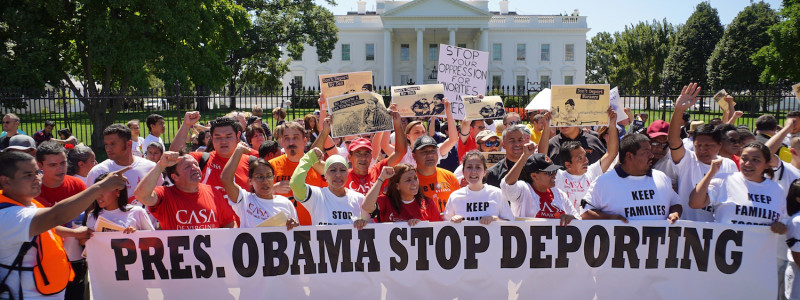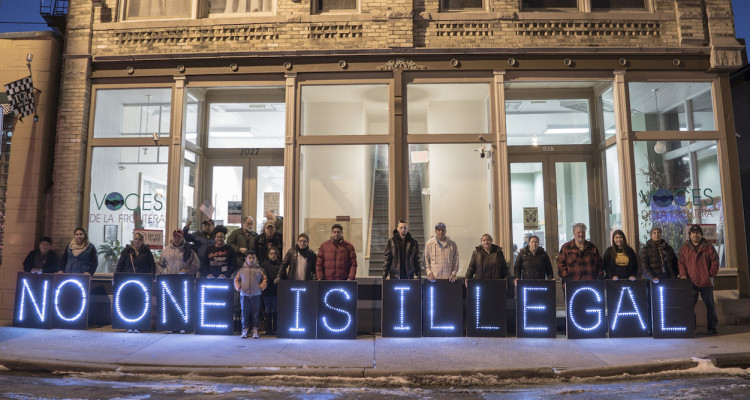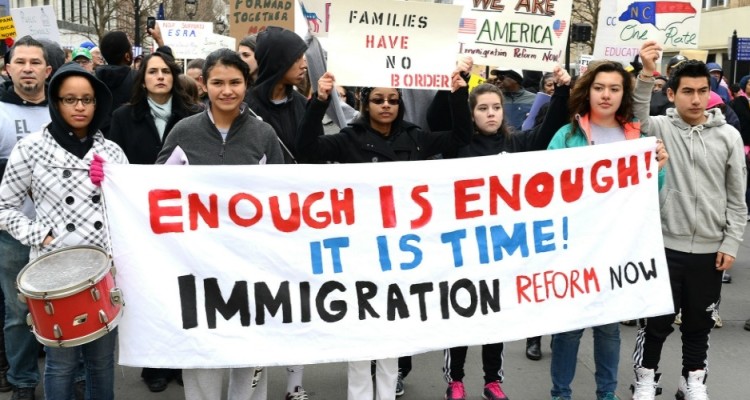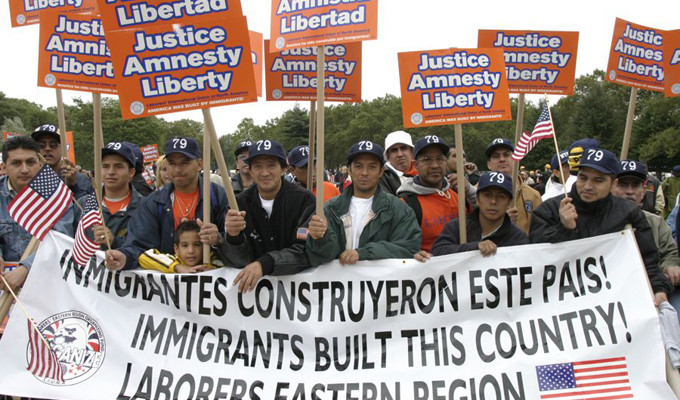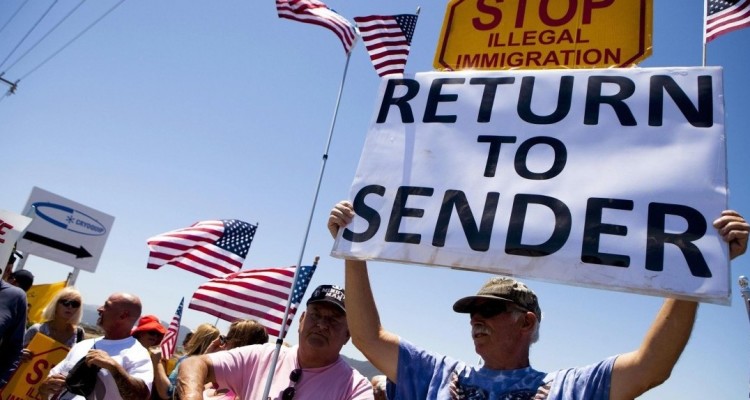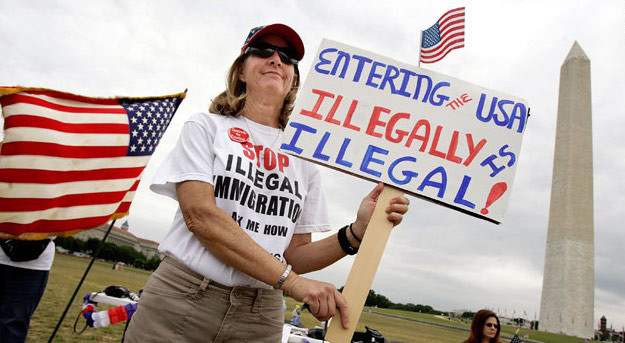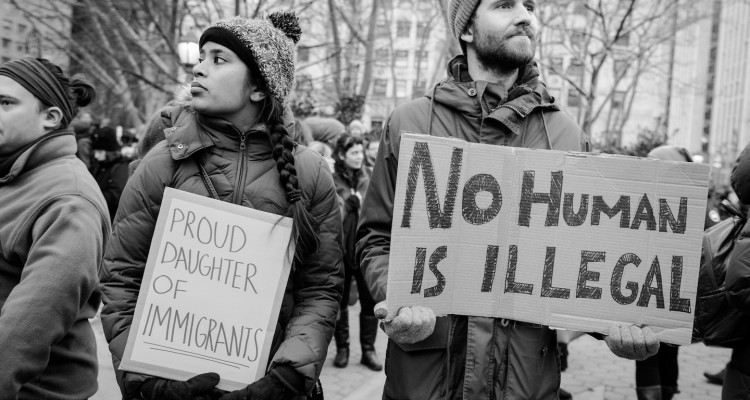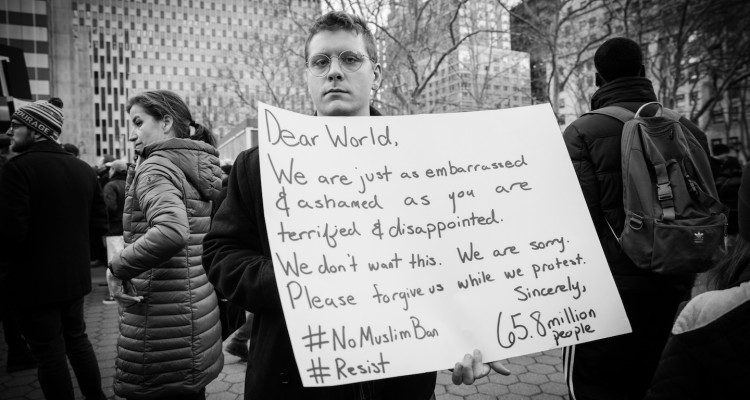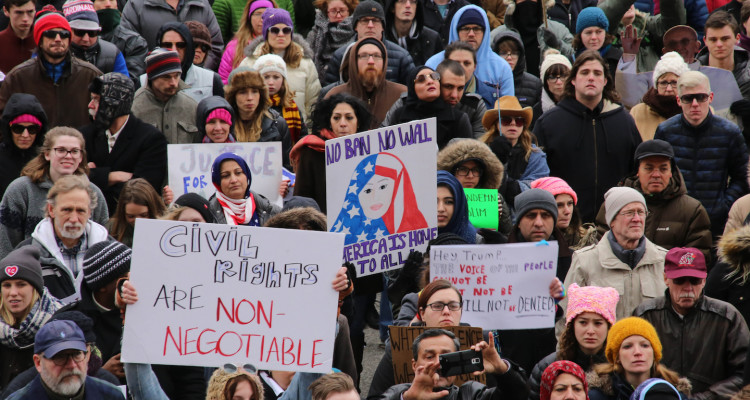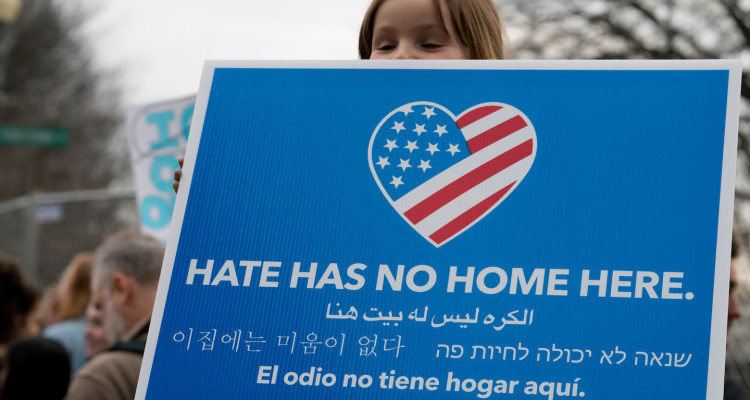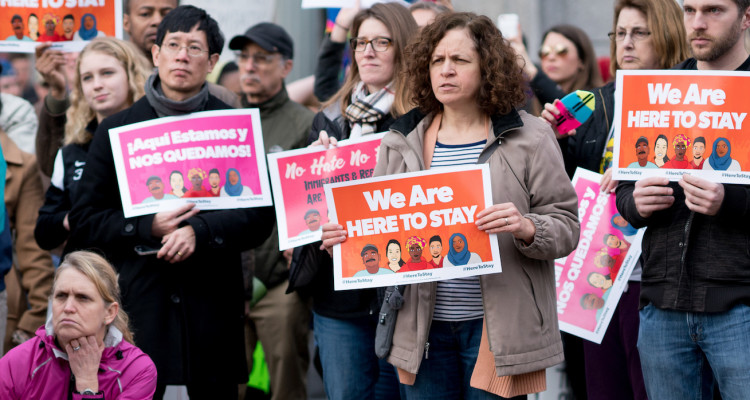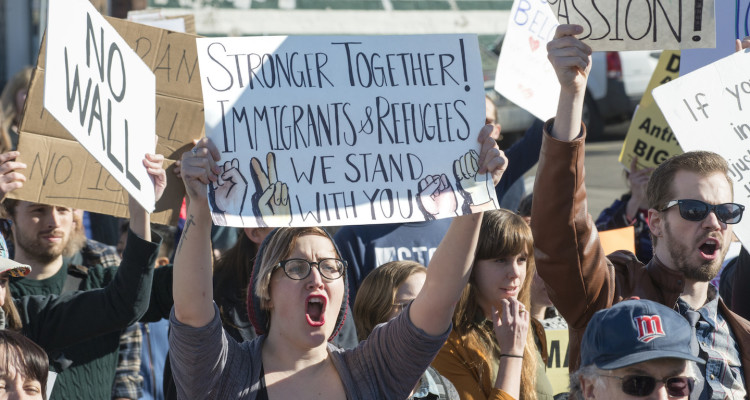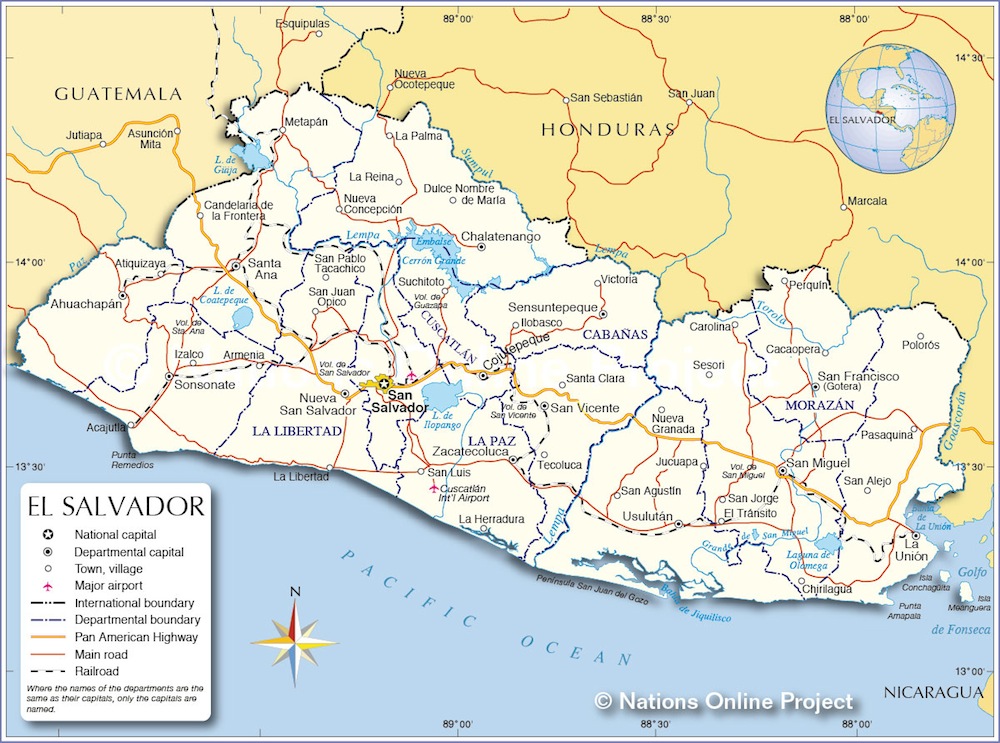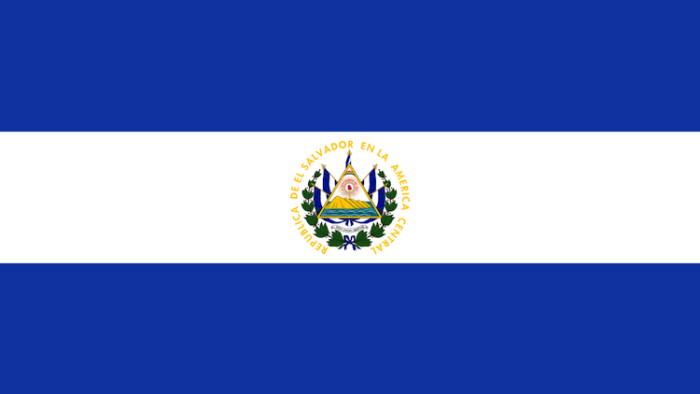Who Killed Juan’s Parents?
Both Juan’s parents were killed by government security forces. His mother was killed in 1980, when Juan was three years old. Soldiers came to the house looking for his father, who some neighbors had denounced as being “subversive.” He wasn’t home, so the soldiers took Juan’s mother, who was six months pregnant. She was never seen again. Some of Juan’s older siblings witnessed the kidnapping.
Juan’s father was killed the following year in combat, after he had joined the FMLN guerrillas. It’s not clear how involved he was prior to his wife’s disappearance. Many people were considered suspicious at that time if they were community leaders or even simply active in the Catholic Church, as Juan’s father was. The church was seen as being supportive of the guerrilla movement and many church activists and leaders were targeted.
It’s reasonable to think that Juan’s father – like thousands of other Salvadorans – joined the armed struggle in response to the military repression as well as to seek economic justice. For decades, a small minority of landowners (called the “Fourteen Families”) ruled the country economically and politically. When labor leader Agustín Farabundo Martí (for whom the FMLN was named) led a peasant revolt in 1932, government troops responded by slaughtering an estimated 30,000 people, known as “la matanza.” The following decades brought cycles of political violence from both right wing paramilitary death squads (and their formal military allies) and left-wing guerrillas.
It was the assassination of Archbishop Óscar Romero on March 24, 1980 that pushed the country into a full blown civil war. The day before, Romero had made his now famous “stop the repression” plea during a church service, calling out directly to the government soldiers whose brutality was widely known. “No soldier is obliged to obey an order contrary to the law of God. No one has to obey an immoral law…. In the name of God and of this suffering people whose cries rise to heaven more loudly each day, I implore you, I beg you, I order you in the name of God: stop the repression.”
Shortly before his death, Romero had written to US President Jimmy Carter, urging him to block a US military aid package for the Salvadoran armed forces. He argued that the aid would only further the suffering and repression of the Salvadoran people. Congress approved the aid package nonetheless, one day after Romero’s murder. But solidifying further US support for the military was not the only response to Romero’s killing: a former FMLN commander credited the action as motivating thousands of people to join the guerrillas. The FMLN became a genuine threat to the regime and the 12 year long war began.
The orphanage where Juan grew up was named for the Archbishop. A Catholic priest and several nuns from the US opened Comunidad Óscar Arnulfo Romero (COAR) in August 1980 to house war orphans. By the time Juan and his siblings arrived a few months later, 80 children had found a home there.
But they didn’t go to COAR right away. After the death of Juan’s mother, his father hid the children until he was able to arrange for them to be taken to the orphanage. Two US nuns who were helping orphans escape from the areas under siege brought Juan and his siblings to COAR. A few months later, on December 4, 1980, those same nuns and two other US churchwomen were brutally raped, executed and buried in a shallow grave by the National Guard.
The churchwomen’s murders inflamed the ongoing debate over US policy toward El Salvador. US Ambassador Robert White, who knew the churchwomen personally, believed that military forces were responsible. But shortly thereafter, in January 1981, Ronald Reagan became President and his administration was determined not to let the killing of a few nuns derail the vast sums of money destined to help El Salvador wage war against the rebels. White was removed from his post. US aid continued to flow.
Although five low level National Guardsmen were convicted for the murders in 1984, no higher ups were ever charged. It wasn’t until 2015 and 2016 that two former Salvadoran military generals who had retired to the US were deported back to El Salvador, due to their participation in the torture and killings of civilians during the war, including the nuns. No charges have been brought against them in El Salvador to date. The government has not been willing to open an investigation to seek out and prosecute the intellectual authors of the killing of the nuns. Nor has anyone ever been brought to justice for murdering Archbishop Romero, although it’s widely believed that a key figure in the crime was a former military intelligence officer, Roberto d’Aubuisson. Famous for leading death squads and as a founder of the right-wing political party, ARENA, D’Aubuisson died of cancer in 1992.
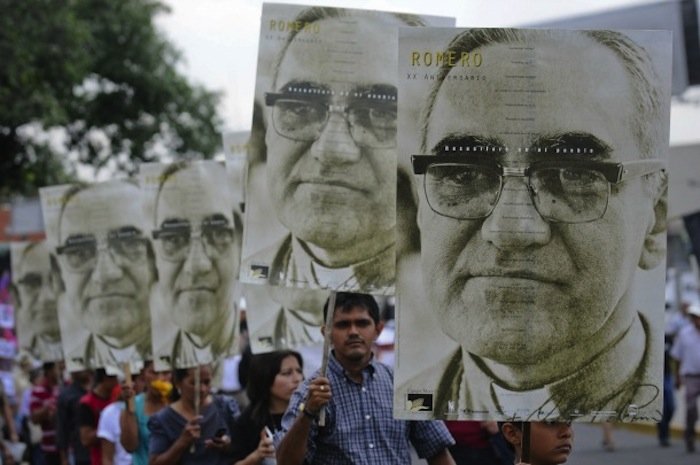
People carry large portraits of Salvadoran Archbishop Oscar Romero during celebration of his beatification in San Salvador. May 23, 2015. Photo by Roberto Escobar/CNS.
On May 23, 2015, Pope Francis beatified Romero, paving the way for him to be canonized, or declared a saint. For years, that process had been blocked by conservative religious forces in both El Salvador and Rome. An estimated 250,000 people filled the streets of San Salvador for the ceremony. Pope Francis commented: “In this day of joy for El Salvador and also for other Latin American countries, we thank God for giving the martyr archbishop the ability to see and feel the suffering of his people.” On October 14, 2018, Pope Francis declared Romero a saint.
SOURCES & LINKS
BBC. “Óscar Romero beatification draws huge El Salvador crowds.” May 23, 2015.
http://www.bbc.com/news/world-latin-america-32859627
Bonner, Raymond. “The Diplomat and the Killer.” ProPublica, February 11, 2016.
https://www.propublica.org/article/the-diplomat-and-the-killer
Center for Justice & Accountability. “Assassination of Archbishop Óscar Romero.”
http://cja.org/what-we-do/litigation/doe-v-saravia/
COAR Peace Mission.
https://coarpeacemission.org/
Dada, Carlos. “The Beatification of Óscar Romero.” The New Yorker, May 19, 2015.
http://www.newyorker.com/news/news-desk/the-beatification-of-oscar-romero
Gibb, Tom. “The killing of Archbishop Óscar Romero was one of the most notorious crimes of the cold war. Was the CIA to blame?” The Guardian, March 23, 2000.
http://www.theguardian.com/theguardian/2000/mar/23/features11.g21
Heaton, Michael. “Children of Hope.” People Magazine, December 5, 1983.
http://people.com/archive/children-of-hope-vol-20-no-23/
McConahay, Mary Jo. “Sainthood isn’t enough for Salvadoran Archbishop Óscar Romero.” Los Angeles Times, September 4, 2014.
http://www.latimes.com/opinion/op-ed/la-oe-0905-mcconahay-archbishop-romero-killers-20140905-story.html
National Public Radio. “Decades Later, New Details in Óscar Romero Death.” All Things Considered, April 6, 2010.
http://www.npr.org/templates/story/story.php?storyId=125639642
New York Times. “Killed in El Salvador: An American Story.” Retro Report, 2014.
http://www.nytimes.com/video/us/100000003224677/a-search-for-justice.html
Severo, Richard. “Roberto d’Aubuisson, 48, Far-Rightist in Salvador.” New York Times, February 21, 1992.
http://www.nytimes.com/1992/02/21/world/roberto-d-aubuisson-48-far-rightist-in-salvador.html
United States Institute of Peace, “Truth Commission: El Salvador.” July 1, 1992.
http://www.usip.org/publications/truth-commission-el-salvador
The War’s Aftermath
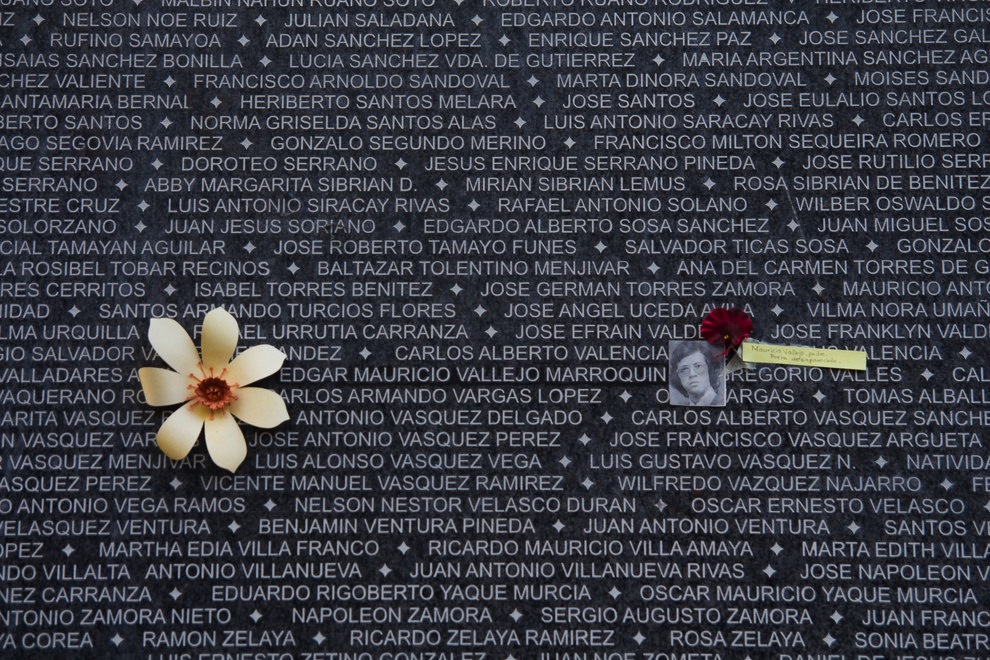
Names of victims on the Monument to Memory and Truth, San Salvador. Photo by J. Lester Feder/BuzzFeed News.
The 12 year long civil war claimed an estimated 75,000 victims out of a population of five million. One out of every five people had been driven out of their homes. Yet neither the Salvadoran military nor the FMLN guerrillas were able to claim military victory. The signing of the UN negotiated Peace Accords in 1992 ended the war.
The FMLN agreed to lay down their arms in exchange for being recognized as a legitimate political party, with guarantees of being able to operate openly in Salvadoran society. Other aspects of the Accords focused on ensuring respect for human rights and reconciliation. They only minimally addressed historical problems related to poverty and inequality.
The UN sponsored “Truth Commission,” mandated by the Peace Accords, attributed 85% of the acts of violence to government agents and approximately 5% to the FMLN. Five days after the Commission released its report, in 1993, the Salvadoran Congress enacted a sweeping amnesty law, which effectively shut off the possibility of criminal investigations and prosecutions of those responsible for war crimes. As a result, there has been no true accounting of even the most notorious acts of violence, from the Mozote massacre in which nearly one thousand people perished, to the assassination of Archbishop Oscar Romero. Two former high level Salvadoran military officers found guilty of war crimes by US courts – including participating in the killing of the US churchwomen and Archbishop Romero – were deported to El Salvador in 2015 and 2016 but have yet to be tried in that country.
But all that might be changing. On July 14, 2016 the Salvadoran Supreme Court struck down the amnesty law, opening the path toward the possible prosecution of war crimes. It remains to be seen if local prosecutors will actually move forward with any cases and what effects that might have at tearing down the wall of impunity. It’s not clear that either the right or the left has the political will to push cases forward. Many witnesses and survivors have already died. So the victims’ long wait for truth, justice and accountability may – or may not – be nearing an end.
Since the war ended, the FMLN has continued their fight for change as a political party, competing in local and national elections. Their primary opponent has been the right-wing ARENA party, which won the first three presidential elections following the war, but in 2009 and 2014 the FMLN claimed the presidency by the slimmest of margins. Although the peaceful alternation of power between the FMLN and ARENA has stabilized the country’s political system, the population remains very polarized. The FMLN has found it difficult to enact many of their policies in part because ARENA has maintained control of the legislature. Significant improvements have been made in education and health care, although both remain chronically understaffed and underfunded. Nonetheless, some of the key factors that led to the war – poverty, inequality, lack of opportunity – still characterize daily life for the majority of Salvadorans today.
El Salvador now has what is called a “remittance economy.” It is the money sent back by relatives in the US that drives the Salvadoran economy. (Over 2 million people of Salvadoran origin live in the US.) Approximately a third of households in El Salvador receive remittances. Although the remittances are credited with keeping many families afloat, the cost in family separation and social fragmentation has been high. Another indicator of the complicated connection between the US and Salvadoran economies was the adoption of the US dollar as the official currency of the country in 2001.
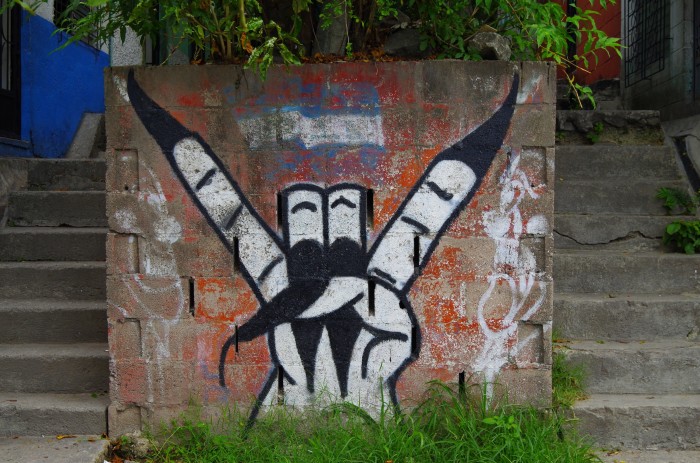
Mural depicting a sign used by members of the MS-13 or Mara Salvatrucha gang. Their name means “street-tough Salvadorans.” Photo by Ken Ford.
But what casts a shadow over everything else today in El Salvador is the shockingly high rate of violence and crime. The political violence fueled by the war has been replaced by criminal violence, largely due to gang related activities and, to a lesser extent, drug trafficking. The war ended but the violence continues, as the number of homicides in “peacetime” has now surpassed that of the worst war years. In 2015, El Salvador became one of the most violent countries in the world, with approximately 18 killings a day. (That is about 20 times the murder rate in the US and 90 times more than in Great Britain.)
An estimated 60-70,000 people are directly involved in gangs or “maras,” the largest of which were established in the 1990s by deported members of Los Angeles gangs. Perhaps half a million more people, including relatives, corrupt officials, and business associates, depend on the gangs economically. Extortion collected by the gangs adds up to roughly $750 million a year. No one is immune to their demands, including the middle class, large companies, and the rich, but bus drivers, small businesses and residents of poor neighborhoods have been hit the hardest.
While virtually everyone in El Salvador has been touched by the violence directly or indirectly, the youth population has felt the greatest impact, according to a recent UN sponsored study. About 28% of the population is between the ages of 15 and 29. The violence affects them in a myriad of ways. Young men are a disproportionate number of both the perpetrators and the victims of the violence. Youth in some areas are seen as either gang members or potential gang members. They are unfairly stigmatized based on where they live or what they wear.
Many young people confront a very real daily struggle to protect their physical security and moral integrity as they share space with others who have opted for delinquency. Mundane activities – walking to school, riding a public bus, going to the store – take on a dangerous and difficult dimension. Youth are taught to distrust everyone as a safety precaution. The violence circumscribes their opportunities for self expression, for physical and mental development and for creating their own identity. Today, an estimated quarter of the population of young people face the same dilemma Juan did in his youth: they are stuck in low-paying jobs due to their lack of education, and can barely get buy on their wages, let alone afford further studies. It is easy to understand why so many turn to migration as a solution.
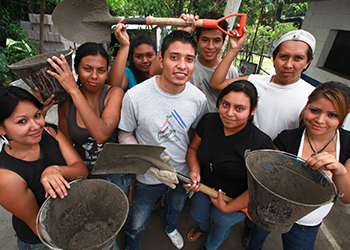
Participants in a “Youth Builders” program run by Catholic Relief Services learn construction skills while improving their communities. Photo by Oscar Leiva/Silverlight.
The UN study found that, in spite of the often grim reality around them, an overwhelming majority of youth reject the path of violence and are clear about what they need: quality education in order to develop their potential and work that allows them to construct a solid future. The report concludes, ”The gang problem is one of the biggest calamities for the Salvadoran society. Nonetheless, many young people, instead of becoming frightened or succumbing, have decided to negotiate the obstacles so that life and liberty replace fear and death.”
SOURCES & LINKS
Bargent, James. “70% of Salvador Murder Victims Not Linked to Gangs: Police.” InSight Crime, November 17, 2015.
http://www.insightcrime.org/news-briefs/two-thirds-of-el-salvador-murder-victims-not-linked-to-gangs
CentralAmericanData.com. “El Salvador: $4.28 billion in Remittances on 2105.” January 20, 2016.
http://www.centralamericadata.com/en/article/home/El_Salvador_428_billion_in_Remittances_in_2015
The Economist. “The gangs that cost 16% of GDP.” May 21, 2016.
http://www.economist.com/news/americas/21699175-countrys-gangs-specialise-extortion-they-may-be-branching-out-gangs-cost
Kinosian, Sarah, Angelika Albaladejo and Lisa Haugaard. “El Salvador’s Violence: No Easy Way Out.” Latin American Working Group. February 10, 2016.
https://www.lawg.org/directory/el-salvadors-violence-no-easy-way-out/
López, Gustavo. “Hispanics of Salvadoran Origin in the United States, 2013.” Pew Research Center. September 15, 2015.
http://www.pewhispanic.org/2015/09/15/hispanics-of-salvadoran-origin-in-the-united-states-2013/
Martínez, Óscar. “A History of Violence: Living and Dying in Central America.” London: Verso, 2016.
Moloney, Anastasia. “Deadly gang extortion rackets drive emigration from El Salvador.” Reuters. May 16, 2016.
http://www.reuters.com/article/us-el-salvador-extortion-idUSKCN0Y71QW
Muggah, Robert. “It’s official: San Salvador is the murder capital of the world.” Los Angeles Times. March 2, 2016.
http://www.latimes.com/opinion/op-ed/la-oe-0302-muggah-el-salvador-crime-20160302-story.html
Our Parents’ Bones Campaign.
http://www.ourparentsbones.org/
Partlow, Joshua. “Why El Salvador became the hemisphere’s murder capital.” The Washington Post. January 5, 2016.
https://www.washingtonpost.com/news/worldviews/wp/2016/01/05/why-el-salvador-became-the-hemispheres-murder-capital/?tid=a_inl
Programa de las Naciones Unidas para el Desarrollo. “Entre esperanzas y miedo: La juventud y la violencia en El Salvador.” San Salvador. 6 de april, 2015.
http://www.sv.undp.org/content/el_salvador/es/home/library/hiv_aids/entre-esperanzas-y-miedo–la-juventud-y-la-violencia-en-el-salva/
Seelke, Clare Ribando. “El Salvador: Background and U.S. Relations.” Congressional Research Service. February 4, 2016.
http://www.fas.org/sgp/crs/row/R43616.pdf
United States Institute of Peace. “From Madness to Hope: the 12 year war in El Salvador. Report of the Commission on the Truth for El Salvador.”
http://www.usip.org/sites/default/files/file/ElSalvador-Report.pdf
Immigration Myths and Facts
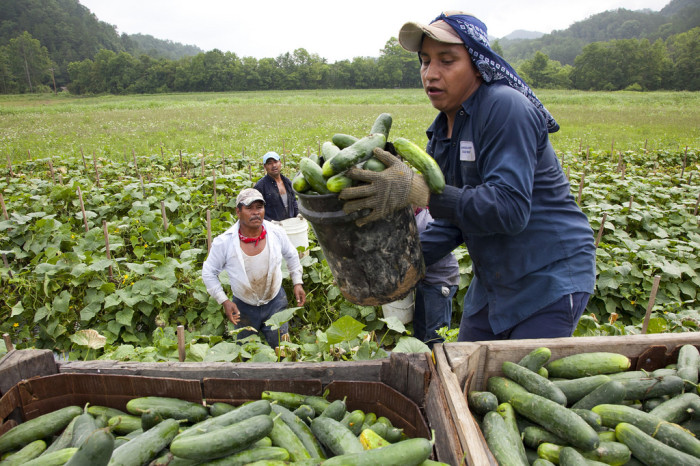
Migrant workers load cucumbers at farm in VA. Almost three-fourths of all hired US farm workers are immigrants, most of them unauthorized. Photo by Laura Elizabeth Pohl/Bread for the World.
1. Unauthorized immigrants take jobs away from US workers.
States with the largest immigrant population tend to have lower unemployment rates. How can this be? The number of jobs in the US economy is not a fixed number. If the approximately eight million undocumented workers left their jobs, that does not mean there would be the same number of jobs to be filled by US workers. That’s because US born and immigrant workers often have different skills that tend to complement – not compete with – one another. US born workers are increasingly unwilling to do the jobs that immigrants do, in large part because the native born workforce overall is both better educated and older.
Many unauthorized immigrants work in low wage jobs in farming, fishing, and forestry, together with guest-workers who have temporary work visas. Others work in clothing manufacturing; the service industry in hotels, restaurants and nursing homes; or are groundskeepers, security guards, or domestic workers. A minority of unauthorized immigrants work in manufacturing and construction. Even fewer work in professional or business related jobs. Immigrants actually help create new jobs as they and their families are consumers who purchase goods and services that help drive the economy. As a group, immigrants are almost twice as likely as native born to be entrepreneurs, starting their own businesses and hiring workers.
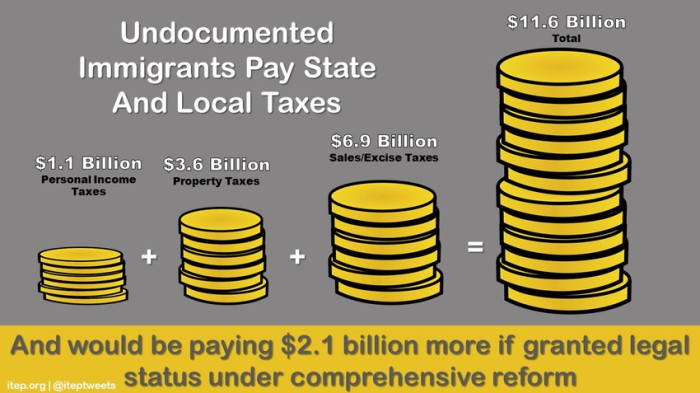
Undocumented Immigrants Pay State and Local Taxes. Source: Institute on Taxation and Economic Policy.
2. Unauthorized immigrants don’t pay taxes but receive benefits.
Studies show that it’s actually the other way around: unauthorized immigrants pay more in taxes than they receive in benefits. Whenever they make a purchase, they pay sales tax. They also pay property taxes, either as property owners, or indirectly, through their landlords as tenants. Many unauthorized immigrants must present a Social Security card to their employer in order to secure a job, so they typically use a fake one. Federal and state income taxes as well as Social Security and Medicare are automatically deducted from their paychecks and sent to the government, which keeps the money even though the number on file is not connected to an authentic social security account. Unauthorized immigrant workers also can pay taxes by filing with an Individual Tax Identification Number (ITIN). In 2010, some three million people paid over $870 million in taxes using an ITIN, according to the IRS. If immigrants wish to legalize their status in the future, having a tax record with an ITIN can provide important proof of both residency and proper payment of taxes.
The primary benefit that unauthorized immigrants receive is public education for their children, paid for in part by property taxes. They may also receive emergency health care. They are not eligible for welfare, food stamps, Medicare, or Social Security benefits. Even if they become legal residents, they cannot receive most benefits for five years, no matter how long they’ve been paying into the system. Overall, estimates show that unauthorized immigrants in fact pay more into the system than any benefits they receive, thereby helping to subsidize the aging American population.
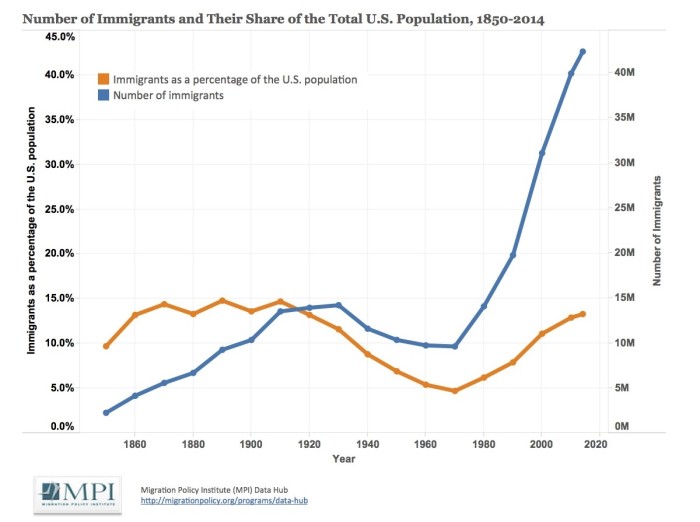
Number of Immigrants and Their Share of the Total U.S. Population, 1850 – 2014. Source: Migration Policy Institute.
3. The US is overrun by immigrants, most of whom are not authorized to be here.
Although the absolute number of immigrants has risen over the last century (blue line), the percentage of immigrants within the overall US population has remained fairly constant (orange line). See table on right.
In 2012, about 13.5% or 42.5 million of the total US population of 314 million were foreign-born. The pie chart on the left shows the breakdown of that 42.5 million, which includes 11.2 million unauthorized immigrants.
4. People wishing to enter the US should go get in line.
Under current US policy, it is virtually impossible for most people to meet any of the criteria for legal entry, which are:
1. You can be sponsored by an employer, but this option is usually available only for people with “extraordinary ability” in the arts, sciences, education, business or athletics; professionals with advanced degrees; and skilled and unskilled laborers for which qualified workers are not available in the US.
2. You can be sponsored by an immediate relative, but they must be a US citizen or permanent legal resident, and you have to be their spouse, parent or minor child.
3. You can be sponsored by a more distant relative, but the wait times can be extreme, due to caps on how many people are accepted depending on the country. If you happen to be from the Philippines or Mexico, for example, the wait can be over two decades.
4. You can apply for refugee resettlement or asylum status, which is granted only to someone who can prove he or she is “unable or unwilling to return to his or her country of nationality due to persecution or a well founded fear of persecution on account of race, religion, nationality, membership in a particular social group or political opinion.” In 2014, nearly 70,000 refugees were admitted from outside the US. Each year the President, in consultation with Congress, establishes both an overall limit to refugees as well as regional allocations. For example, Latin America was allotted 5000 slots that year. In that same year, almost 24,000 people who were already inside the US were granted asylum. Although there is no cap on the numbers, it is extremely difficult to obtain asylee status. There is currently a backlog of close to half a million cases in the immigration courts. And Central Americans who make it through the process are fighting the odds: in recent years, only 10 – 20% of applicants were granted asylum. The largest numbers accepted in recent years were from China and Egypt.
5. You can win the “Green Card Lottery.” This program is available to qualifying people from countries with low immigration rates. Up to 55,000 visas are available annually to people randomly selected from eligible countries. But to qualify, applicants must have completed high school or worked in certain occupations during the previous five years.
5. Unauthorized immigrants boost the crime rate.
Crime rates have fallen over the past decades even as the number of unauthorized immigrants has risen. Numerous studies show that foreign born people (including citizens, permanent residents and the unauthorized) are less likely than the those born in the US to commit violent crimes or to be incarcerated.
6. Unauthorized immigrants pose a security threat.
In their 2016 report on immigration, the US Chamber of Commerce, a conservative business advocacy organization, responded to this argument: “Indiscriminately targeting all unauthorized immigrants, either by trying to deport all those currently in the country or building a wall in an attempt to keep others out in the future, is too unfocused to effectively enhance national security. The real threats to security are the transnational criminal organizations that move people, drugs, guns, and money in both directions across the border. The vast majority of migrants being smuggled – who are looking for work, trying to reunite with family members in the United States, or fleeing violence and persecution – do not pose a danger to American citizens.”
SOURCES & LINKS
American Immigration Council. “The Facts about the Individual Tax Identification Number (ITIN).” April 5, 2016.
https://www.americanimmigrationcouncil.org/research/facts-about-individual-tax-identification-number-itin
Anti-Defamation League. “Myths and Facts About Immigrants and Immigration.” 2015.
http://www.adl.org/assets/pdf/education-outreach/myths-and-facts-about-immigrants-and-immigration.pdf
Campbell, Alexia Fernández. “The Truth About Undocumented Immigrants and Taxes.” The Atlantic. September 12, 2016.
http://www.theatlantic.com/business/archive/2016/09/undocumented-immigrants-and-taxes/499604/
Constable, Pamela. “Majority of undocumented immigrants work in low-skill jobs, report finds.” The Washington Post. March 26, 2015.
https://www.washingtonpost.com/local/majority-of-undocumented-immigrants-work-in-low-skill-jobs-report-finds/2015/03/26/dada9f2a-d3bc-11e4-a62f-ee745911a4ff_story.html
Department of Homeland Security. “Refugees & Asylum.” U.S. Citizenship and Immigration Services. November 12, 2015.
https://www.uscis.gov/humanitarian/refugees-asylum
Eichenwald, Kurt. “Illegal Immigration: Myths, Half-Truths and A Hole in Trump‘s Wall.” Newsweek. October 14, 2015.
http://www.newsweek.com/2015/10/23/myths-half-truths-about-immigration-reform-382855.html
Institute on Taxation and Economic Policy. “Undocumented Immigrants’ State and Local Tax Contributions.” February 24, 2016.
http://www.itep.org/immigration/
Migration Policy Institute. “U.S. Immigrant Population and Share over Time, 1850 – Present.”
http://www.migrationpolicy.org/programs/data-hub/charts/immigrant-population-over-time
Passel, Jeffrey S. and D’Vera Cohn. “Overall Number of U.S. Unauthorized Immigrants Holds Steady Since 2009.” Pew Research Center. September 20, 2016.
http://www.pewhispanic.org/2016/09/20/overall-number-of-u-s-unauthorized-immigrants-holds-steady-since-2009/
Pew Research Center. “5 facts about illegal immigration in the US.” September 20, 2016.
http://www.pewresearch.org/fact-tank/2016/09/20/5-facts-about-illegal-immigration-in-the-u-s/
–––––. “U.S. Foreign-Born Population, 2012.” September 23, 2015.
http://www.pewhispanic.org/2015/09/28/modern-immigration-wave-brings-59-million-to-u-s-driving-population-growth-and-change-through-2065/ph_2015-09-28_immigration-through-2065-62/
Santana, Maria. “5 immigration myths debunked.” CNN Money. November 20, 2014.
http://money.cnn.com/2014/11/20/news/economy/immigration-myths/
Teaching Tolerance. “Ten Myths About Immigration.” Spring 2011.
http://www.tolerance.org/immigration-myths
United States of America Green Card Lottery. Official U.S. Government Entry Program.
http://www.usadiversitylottery.com/
U.S. Chamber of Commerce. “Immigration Myths and Facts.” April 14, 2016.
https://www.uschamber.com/sites/default/files/documents/files/022851_mythsfacts_2016_report_final.pdf
U.S. Citizenship and Immigration Services. “Refugees.” May 25, 2016.
https://www.uscis.gov/humanitarian/refugees-asylum/refugees
Zong, Jie and Jeanne Batalova. “Refugees and Asylees in the United States.” Migration Policy Institute. December 28, 2015.
http://www.migrationpolicy.org/article/refugees-and-asylees-united-states
Young Immigrants in the United States
“We didn’t leave El Salvador because we wanted to; we left because we had to.” The young immigrant who wrote that could just have easily been from Guatemala. During both the war years and today, due to the widespread violence, Salvadorans and Guatemalans are fleeing because they see just two options: stay in their country and face possible death or try to come to the US without authorization. (See Yesenia: Why So Many Separated Families? for more background.) Most of the 11.1 million unauthorized or undocumented immigrants in the US, including the Central Americans, would prefer to establish legal residence but simply have no way to do so. Unauthorized residents can have limited ability to obtain higher education or further their careers, get credit from a bank, access government benefits and so forth. The possibility of deportation is a black cloud ever present in their lives. Families with US born children and one or both unauthorized parents, known as “mixed status” families, suffer from ongoing fear that their family may be torn apart.
Unauthorized immigrant youth who want to attend college often face especially difficult hurdles. Due to their status, they can be denied state and federal financial aid and be excluded from in-state tuition, effectively closing the door to higher education. In the mid 2000s immigrant youth began to organize to press for more equitable educational opportunities. Advocacy groups rallied around passage of the Development, Relief and Education for Alien Minors (DREAM) Act, giving immigrants brought to the US as children a path toward legal status and access to higher education. Despite multiple attempts over the years, there were never enough votes in Congress to pass the DREAM Act.
Meanwhile, the grassroots immigrant youth movement was widening its focus beyond the DREAM Act. One by one, immigrant youth began to tell their stories publicly, proudly announcing themselves “undocumented and unafraid.” They began to talk about the psychological consequences they were suffering by going about daily life in fear of being discovered. Some young people in Chicago began a campaign in 2010 called “Coming Out of the Shadows,” sharing their own difficulties and encouraging others to tell their stories on social media. Four students walked from Miami to Washington D.C. to call on politicians to fix the broken immigration system which kept them “in fear and hiding, unable to achieve our full potential.” They talked to thousands of people along the way, as well as the media, about being “stripped of the opportunity to participate meaningfully in society.”
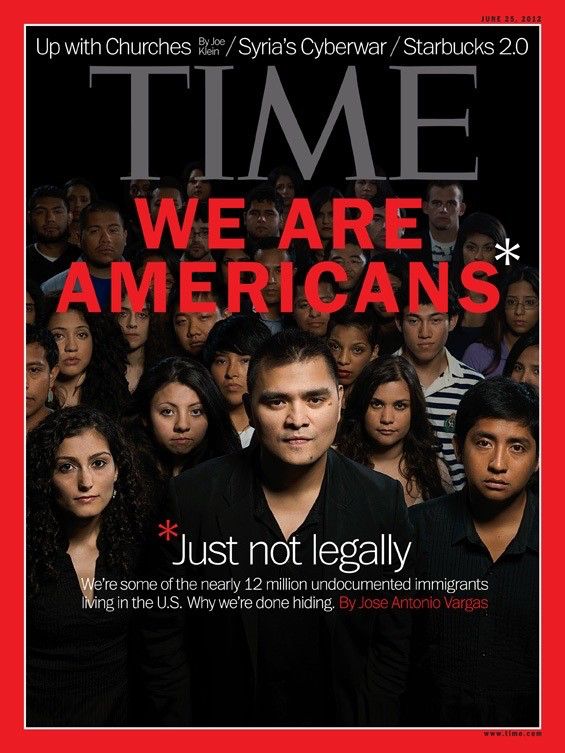
Cover of June 25, 2012 issue of TIME Magazine with Jose Antonio Vargas and other unauthorized immigrants.
Jose Antonio Vargas, an unauthorized immigrant born in the Philippines, wrote an essay in the New York Times Magazine. A college graduate with a successful career in journalism, Vargas described living “…in fear of being found out…. rarely trusting people, even those closest to me, with who I really am…. [and] reluctantly, even painfully, doing things I know are wrong and unlawful.” In 2012, TIME Magazine featured Vargas in a cover article focusing on how he and thousands of other unauthorized immigrants were done hiding. These high profile stories opened space for others to speak out.
Young immigrants continued to organize and were instrumental in pushing President Obama to sign the Deferred Action for Childhood Arrivals (DACA) executive order in 2012. This gave eligible undocumented young adults greater access to financing higher education, work permits and security from the threat of deportation. In September 2017, President Trump ended the DACA program, exhorting the Congress to “do their job” and pass “responsible immigration reform” by the end of six months. A number of states immediately filed lawsuits arguing that the move was unconstitutional. Meanwhile, the future of some 800,000 young DACA recipients, many of whom have been in the US since they were infants or young children, is now up in the air.
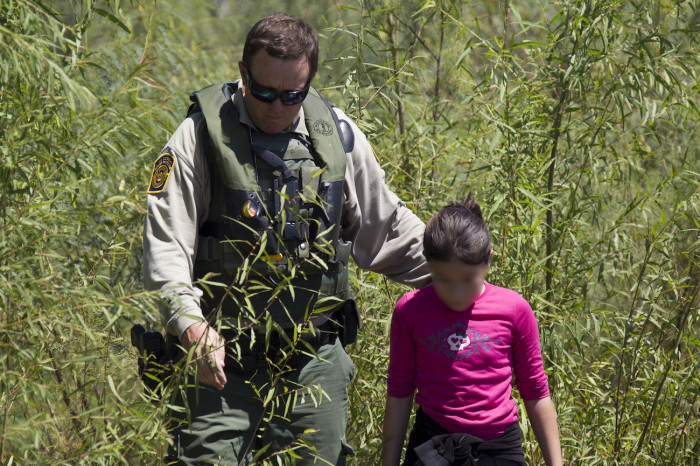
A Border Patrol officer assists a girl stranded on the river bank of Rio Grande in Texas. Photo by Donna Burton/US Customs and Border Patrol.
And many young people were not eligible for DACA, including the approximately 115,000 Central American minors who came by themselves to the US in the past three years. It is a measure of their desperation that parents continue to send their children, many of whom are not yet even teenagers, on the journey north, in spite of the high cost, the extreme danger involved and the low chance of achieving legal status if they do make it to the US.
What has happened to all these children? Some have already been deported, either when caught at the border or later. Most go to live with family members and are waiting for the immigration court to decide whether they can stay in the US or not, which often takes years due to the backlog of cases. In the immigration system, there are no juvenile or family courts, children are effectively treated the same as adults. Immigration authorities are not required to consider the best interest of the child. Unaccompanied minors are not guaranteed court-appointed legal counsel. Only a minority can afford their own lawyer or find one to take their case pro bono, which greatly enhances their chance of being allowed to stay in the US. A majority of the minors are left attempting to navigate the complex immigration system on their own and consequently have a much greater chance of being deported. Some come before judges who postpone the case over and over, giving the minor a temporary reprieve, but no permanent solution.
Meanwhile, the young people are adjusting to a new life. States, communities and schools vary in how welcoming they have been to the minors. Some have allocated resources and worked to help the kids make a difficult transition, others have let them fend for themselves and some have placed obstacles in their path. The challenges these youth face are enormous. They often have been victims of violence themselves, or witnesses to terrible events, either in their home countries or on their journey north, or both. Such traumatic experiences can leave deep emotional scars, requiring support and treatment which often is not accessible.
Most young Central Americans speak little or no English when they arrive in the US. Many were not able to attend school regularly in their home countries. Many are forced by necessity to work as well as study. Some have re-united with a parent, but they may not have seen him or her since they were very young. Others went to live with distant relatives they had never met. The families they have joined are likely to be struggling themselves economically and may have unauthorized members as well. Almost all recent immigrant youth from Central America live in fear for the family and friends left behind. But their worst nightmare is often that they will be sent back, possibly to face the same, or worse, threats and violence than before.
SOURCES & LINKS
Blumberg, Elliot and Oliver Contreras. “They made the long, rough journey to cross the U.S. border alone. Here are their faces and voices.” Washington Post. Oct. 14, 2015. https://www.washingtonpost.com/news/in-sight/wp/2015/10/14/they-made-the-long-rough-journey-to-cross-the-u-s-border-alone-here-are-their-faces-and-voices/
Carcamo, Cindy. “Nearly 1 in 4 students at this L.A. high school migrated from Central America – many without their parents.” Lost Angeles Times. July 15, 2016. http://www.latimes.com/local/lanow/la-me-belmont-high-school-20160710-snap-story.html
Carrillo, Wendy. “A Salvadoran Immigrant Story.” The Huffington Post. May 21, 2010.
http://www.huffingtonpost.com/wendy-carrillo/a-salvadoran-immigrant-st_b_584278.html
Davis, Julie Hirschfield. “U.S. to Admit More Central American Refugees.” The New York Times. July 26, 2016.
http://www.nytimes.com/2016/07/27/us/politics/obama-refugees-central-america.html?_r=0
Define American.
https://defineamerican.com/
Deruy, Emily. “Across the Border and Into School.” The Atlantic. August 20, 2016.
http://www.theatlantic.com/education/archive/2016/08/across-the-border-and-into-school/496652/
Dickson, Caitlin. “How Mexico’s Cartels Are Behind the Border Kid Crisis.” The Daily Beast. July 9, 2014.
http://www.thedailybeast.com/articles/2014/06/23/how-mexico-s-cartels-are-behind-the-border-kid-crisis.html
Fessler, Pam. “Many Unaccompanied Minors No Longer Alone, But Still In Limbo.” National Public Radio. March 9, 2015.
http://www.npr.org/2015/03/09/390694404/many-unaccompanied-minors-no-longer-alone-but-still-in-limbo
Hylton, Annie and Sarah Salvadore. “’They Said We Would Pay With Our Lives.’” Slate. August 31, 2016.
http://www.slate.com/articles/news-and-politics/gender-and-migration/2016/08/as-central-american-gangs-target-younger-kids-more-minors-are-fleeing-to.html
Lapowsky, Issie. “Undocumented, Unafraid: Immigrants Find Power Revealing Themselves Online.” Wired. June 2, 2016.
https://www.wired.com/2016/06/online-undocumented-immigrants-come-shadows/
Los Angeles Magazine. “The Immigration Issue.” October 5, 2016.
http://www.lamag.com/citythinkblog/the-immigration-issue/
Malik, Sanam. “DACA Helps Undocumented Students Access Higher Education.” Center for American Progress. April 7, 2015. https://www.americanprogress.org/issues/immigration/news/2015/04/07/110558/daca-helps-undocumented-students-access-higher-education/
National Immigrant Justice Center. “Unaccompanied Immigrant Children.”
http://www.immigrantjustice.org/issues/unaccompanied-immigrant-children
National Immigration Law Center.
https://www.nilc.org
Santos, Fernanda. “It’s Children Against Lawyers in Immigration Court.” The New York Times. August 20, 2016.
http://www.nytimes.com/2016/08/21/us/in-immigration-court-children-must-serve-as-their-own-lawyers.html?_r=1
United We Dream: Immigrant youth building a movement for justice.
http://unitedwedream.org
Vargas, Jose Antonio. “My Life as an Undocumented Immigrant.” New York Times Magazine. June 22, 2011.
http://www.nytimes.com/2011/06/26/magazine/my-life-as-an-undocumented-immigrant.html
Wiltz, Teresa. “Unaccompanied Children from Central America, One Year Later.” The Huffington Post. August 24, 2015. http://www.huffingtonpost.com/entry/unaccompanied-children-from-central-america-one-year-later_us_55db88b4e4b04ae497041d10
The Young Center for Immigrant Children’s Rights.
https://www.theyoungcenter.org/reforming-the-immigration-what-we-do
U.S. Immigration, A Policy in Flux
The United States has grappled with immigration throughout its history. Who should be allowed – or even encouraged – to enter the country? Who should be banned? Once here, who meets the criteria for gaining legal status or citizenship, and who does not? And who qualifies for deportation?
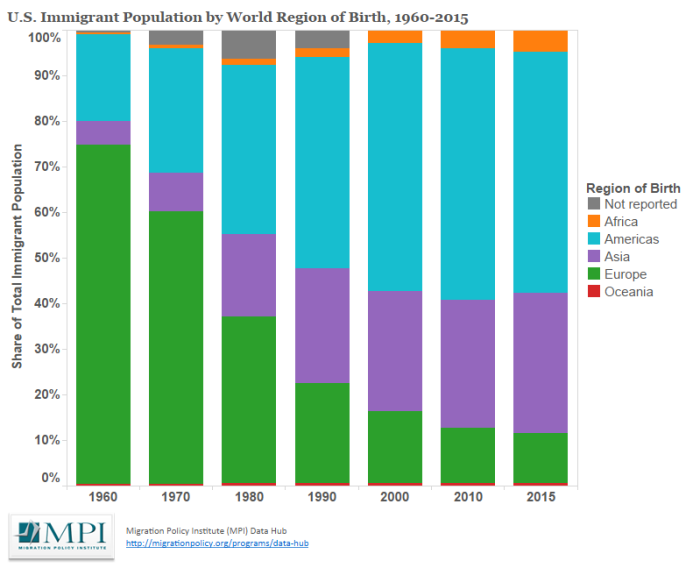
U.S. Immigrant Population by World Region of Birth, 1960 – 2015. Source: Migration Policy Institute.
The current immigration system has its roots in the 1965 Immigration and Nationality Act, which established a preference system based primarily on family reunification and secondarily on worker skills. Number limits (caps) are set on immigrant visas for countries and regions but they do not apply to immediate relatives – spouses, minor children and parents of adult US citizens. Any US citizen may petition for an immediate relative to immigrate. This Act led to significant demographic changes in the US population as the number of European immigrants declined, while the number coming from Asia and Latin America grew steadily. Skilled immigrants from those regions settled, paving the way for subsequent immigration by family members.
The 1980 Refugee Act established a system to handle refugees as distinct from immigrants. Refugees were defined as those fleeing a country due to persecution because of their race, religion, nationality, membership in a particular social group, or political opinion. Most Central Americans are disqualified for refugee status, because fleeing extreme criminal violence, gangs, drugs and extortion does not fit the strict definition. Annual ceilings are determined by the President in consultation with Congress. President Obama set the ceiling at 110,000 refugees for fiscal year 2017, which President Trump lowered to 45,000 for fiscal year 2018 but less than half that number were actually allowed in. He further reduced the ceiling to 30,000 for fiscal year 2019.
The last major overhaul of immigration policy was in 1986, under President Ronald Reagan. The Immigration Reform and Control Act cracked down on illegal immigration through employer sanctions, but also granted amnesty (legalization) to three million unauthorized immigrants. Reagan, the father of modern conservatism, argued: “I believe in the idea of amnesty for those who have put down roots and lived here, even though some time back they may have entered illegally.”
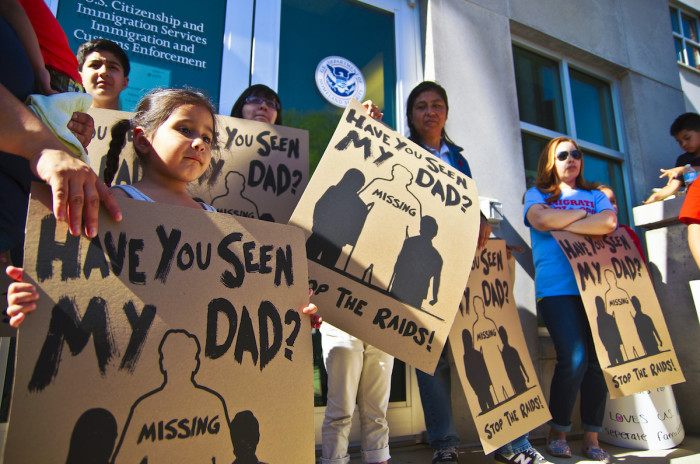
Demonstration against immigration raids outside Immigration and Customs Enforcement (ICE) Office, Milwaukee, WI, 2014. Photo by Joe Brusky/Flickr Creative Commons.
A decade later, in 1996, President Bill Clinton signed the Illegal Immigration Reform and Immigrant Responsibility Act, which laid the foundation for the massive deportation machine that exists today. Millions of immigrants, even those with legal residency, became deportable for non-violent and often minor offenses like shoplifting, marijuana possession, or jumping a subway turnstile. The simple act of having crossed the border without authorization became grounds for removal. The law also made it extremely difficult for unauthorized immigrants to obtain legal status, even if they were married to a US citizen or had US-born children. Possible deportation became a near constant threat.
Much of the current immigration debate centers on the 11 million unauthorized immigrants (1.6 million from Central America) currently living in the US. Some experts argue that if the 1996 law hadn’t made it so hard to obtain legal status, the number of unauthorized immigrants might be significantly smaller, because millions of people would have qualified for green cards or citizenship. In any case, deportations went from 70,000 in 1996 to a high of 435,000 in 2013. In the wake of the September 11, 2001 attacks, spending on border security and deportations increased dramatically.
Immigration reform has been a recurring theme in the past few presidential elections. Politicians and the public generally agree that reform is urgent, but are deeply divided about what it should look like. There has been no substantive immigration legislation for over a decade. Both Presidents George W. Bush and Obama pledged to tackle comprehensive immigration reform but neither was successful.
President Obama did issue an executive order regarding unauthorized immigrants. The “Deferred Action for Childhood Arrivals” (DACA, 2012) allows young unauthorized immigrants meeting certain requirements a temporary postponement of deportation proceedings and a work permit. In 2015, his administration also issued new policies intended to focus immigration enforcement efforts on convicted criminals, terrorism threats or those who most recently crossed the border. Law-abiding unauthorized immigrants were supposed to be left alone, but many were swept up in raids. The record numbers of immigrants deported during the Obama administration earned him the title of “Deporter-in-Chief.”
President Trump has made immigration a centerpiece of his policy concerns. He has promised – or threatened – to build a wall along the US -Mexico border (and get Mexico to pay for it); deport millions of unauthorized immigrants by greatly increasing the number of border patrol and immigration agents; reverse DACA; withhold funding for “sanctuary cities” whose local police refuse to turn in nonviolent unauthorized immigrants to federal authorities; ban Muslim immigrants; and carry out “extreme vetting” for refugees.
It remains to be seen how successful President Trump will be. There is both support for and tremendous resistance to his proposals. It’s highly unlikely Mexico will pay for the wall and Congress may not have the political will to approve or fund it. Increases in the number of border patrol agents and immigration officials are in progress but constrained by the cost and difficulty of hiring thousands of new workers. Although the actual number of deportations has not changed much yet, it might if the system gets cranked up. Well publicized raids on immigrants who pose no obvious threat, together with angry rhetoric from the President and his supporters, have cast widespread fear within immigrant families and communities. Both Trump’s attempt to withhold funding from “sanctuary cities” and ban people from majority Muslim nations have been struck down in the courts, and may ultimately be decided by a higher court.
For Central Americans escaping horrific violence in their home countries, the reality that any undocumented immigrant in the US has become a priority for removal is a terrifying prospect. There are few hard statistics about what happens to people deported back to Central America, but anecdotal evidence is frightening. Gang and drug related violence remains at alarming levels and nothing in Trump’s policies addresses that fact. With conditions so extreme in their home countries, it is likely significant numbers of Central Americans will continue to make their way to US in the coming years. The response to them as well as the treatment of those already here, will continue to both shape and reveal our national identity.
SOURCES & LINKS
American Immigration Council, “How the United States Immigration System Works,” 12 August 2016.
https://www.americanimmigrationcouncil.org/research/how-united-states-immigration-system-works
Ball, Molly, “Obama’s Long Immigration Betrayal,” The Atlantic, 9 September 2014.
https://www.theatlantic.com/politics/archive/2014/09/obamas-long-immigration-betrayal/379839/
Chishti, Muzaffar, Faye Hipsman, and Isabell Ball, “Fifty Years On, the 1965 Immigration and Nationality Act Continues to Reshape the United States,” Migration Policy Institute, 15 October 2015.
http://www.migrationpolicy.org/article/fifty-years-1965-immigration-and-nationality-act-continues-reshape-united-states
Cohn, D’Vera, “How U.S. Immigration laws and rules have changed through history,” Pew Research Center, 30 September 2015.
http://www.pewresearch.org/fact-tank/2015/09/30/how-u-s-immigration-laws-and-rules-have-changed-through-history/
Lind, Dara, “The disastrous, forgotten 1996 law that created today’s immigration problem,” Vox, 28 April 2016.
http://www.vox.com/2016/4/28/11515132/iirira-clinton-immigration
McKay, Ramah, “Family Reunification,” Migration Policy Institute, 1 May 2003.
http://www.migrationpolicy.org/article/family-reunification
National Public Radio, “A Reagan Legacy: Amnesty for Illegal Immigrants,” 4 July 2010.
http://www.npr.org/templates/story/story.php?storyId=128303672
Walsh, James D. and Nick Tabor, “New York Would Never Dream of Building a Wall,” New York Magazine, 13 December 2016.
http://nymag.com/daily/intelligencer/2016/12/42-immigrant-new-yorkers-on-living-in-a-sanctuary-city.html
El Salvador Maps & Facts
Size: 8124 sq. miles, the size of Massachusetts
Population: 6,340,000 (2013)
Capital: San Salvador
People: mixed Spanish and indigenous (mestizo)
Language: Spanish
Religions: Roman Catholic, Protestant (including evangelical)
Independence (from Spain): 1821
- 34.5% of the population lives below poverty level.
- 84.5% of people over age 15 are literate.
- Life expectancy among lowest in Latin America.
- Problems related to crime, gangs and the drug trade pose serious security problems for El Salvador.
- It is the most densely populated country in the Americas.
- Large scale natural disasters struck El Salvador right after the war, making recovery difficult: Hurricane Mitch in 1998 and earthquakes in 2001, resulting in over 1200 deaths and one million left homeless.
- El Salvador’s economy is heavily dependent on remittances, money sent home by Salvadorans living abroad (mostly in the US).
- In 2002, El Salvador stopped using its own currency and adopted the US dollar.
QUICK FACTS ABOUT THE WAR
Dates: 1980 -1992 (12 years)
In 1980 the five major leftist revolutionary organizations merged to form the Farabundo Martí National Liberation Front (FMLN). Their guerrilla forces opposed government military and right-wing paramilitary forces.
Over 75,000 civilians were killed.
The Truth Commission attributed 85% of acts of violence to state agents (military, paramilitary) and approximately 5% to the FMLN insurgents.
Historical Timeline
1000 CE – Immigrants from what is now Mexico begin moving south. They are Pipils and speak Nahuat. They call their new home Cuzcatlán – Land of the Jewels – because of its beautiful and fertile lands.
1524 – 1821 – Spanish conquerors led by Pedro de Alvarado invade El Salvador. The Pipils resist but are eventually defeated. By the late 1800s, 80% of the Pipil population have been killed. Survivors intermarry with Spanish colonists, producing a large mestizo population.
1821 – 1838 – In 1821, El Salvador declares independence from Spain, joining the United Provinces of Central America. Salvadoran politics divides into Conservatives and Liberals (see Guatemalan Historical Timeline).
1840 – Upon dissolution of the United Provinces of Central America, El Salvador gains complete independence.
1840 – 1931 – By the end of the 19th century, coffee becomes the major export crop. An oligarchy known as Los Catorce, or Fourteen Families, owns most of the fertile land. There is almost no middle class and the rest of the country lives in poverty.
1931 – General Maximiliano Hernández Martínez seizes and holds power until 1944. There is economic and political turmoil led by peasants and urban workers.
1932 – Some 30,000 people are killed in what is called La Matanza (The Slaughter). Communist leader Farabundo Martí is captured and executed. Hernández orders soldiers to kill anyone who looks or sounds indigenous, resulting the death of many Pipils. Those who survive hide their heritage, discard their traditional clothing and stop speaking their language.
1932 – 1969 – El Salvador continues to be run by the military either directly or through military controlled political parties. In the 1960s, more peasants lose their land as cotton and sugar join coffee as major export crops.
1969 – El Salvador and Honduras engage in brief but bloody war provoked by thousands of Salvadorans working on banana plantations in Honduras.
1970 – 1979 – Students, teachers, workers and religious leaders organize to demand reforms for a more equitable society. Both the 1972 and 1977 presidential elections are fraudulent. Social discontent grows. As protestors are met with violence, many no longer see legal opposition as an option. Wealthy landowners and businessmen create political organizations that are forerunners to the right-wing Nationalist Republican Alliance (ARENA) party. They begin to organize and finance death squads. Violence increases dramatically in early 1979 as government sponsored killings, mass arrests and tortures are directed against student and labor organizations and the Catholic Church. The hardline military block attempts at political reform.
1980 – Archbishop Óscar Romero is murdered while celebrating Mass, a day after appealing to soldiers in a sermon broadcast over the radio: “In the name of God… stop the repression.” Later that year, the armed opposition groups form the Farabundo Martí Liberation Front (FMLN), named after the leader of the 1932 uprising. In December, four American churchwomen are raped, tortured and killed. The country is now in full-fledged civil war.
1980 – 1989 – The Salvadoran military uses US funding and training to implement a counterinsurgency strategy designed to destroy all potential support for the guerrillas. Rural communities are bombed, tens of thousands of people are killed by the army and death squads. Large numbers of people flee their homes, some going to Honduras, Mexico and the US. The FMLN gains control of substantial territory in the north and sets up alternative local government. In 1984, US support helps elect Christian Democrat José Napoleón Duarte president. But ARENA gets control of the National Assembly and then the presidency in 1989, and despite continuing repression, social unrest grows and the popular movement mobilizes.
1989 – The government and FMLN initiate peace talks but they break down and the FMLN launches an offensive against San Salvador, the country’s largest city. After the government attacks and bombs poor neighborhoods, killing many civilians, the FMLN withdraws. On November 16, soldiers murder six Jesuit priests, their housekeeper and her daughter on the University of Central America campus. The killings are widely seen as an attempt to wipe out what the army believes is the intellectual leadership of the guerrillas.
1992 – On January 16, the Salvadoran government and the FMLN sign peace accords. The FMLN is recognized as a political party.
1993 – The United Nations releases a report on human rights during the 12-year civil war, placing the blame for 85% of violations on the government security forces. It also cites the FMLN guerrillas for some violations. The Congress approves a general amnesty for those accused of civil war atrocities, thereby institutionalizing impunity.
1994 – The first post-war elections with the FMLN participating as political party. The ARENA candidate wins the presidency with an FMLN-led coalition in second place as the main political opposition.
2001 – Massive earthquakes kill 1200 people and leave a million more homeless.
2002 – A US court finds two retired Salvadoran army generals living in the US responsible for civil war atrocities and orders them to compensate the victims who brought the case.
2009 – Mauricio Funes of the FMLN party is elected president. The FMLN also has a strong presence, though not a majority, in the Congress.
2013 – Truce established between two major street gangs, La Mara Salvatrucha (MS-13) and Barrio 18 (18th Street), whose numbers began increasing in the 1990s. The homicide rate falls significantly.
2014 – Salvador Sánchez Cerén of the FMLN wins the presidential election with a narrow victory. The gang truce falls apart and homicides skyrocket. Thousands of unaccompanied minors from El Salvador, Guatemala and Honduras flee to the US.
2015 – Murdered Archbishop Romero is beatified, after Pope Francis approved his status as martyr.
2016 – The Supreme Court struck down the 1993 amnesty law, paving the way for possible prosecution of those responsible for war crimes.
2017 – El Salvador becomes the first country in the world to ban metallic mining, due to its destructive impact on the environment, water supplies and people’s health.

